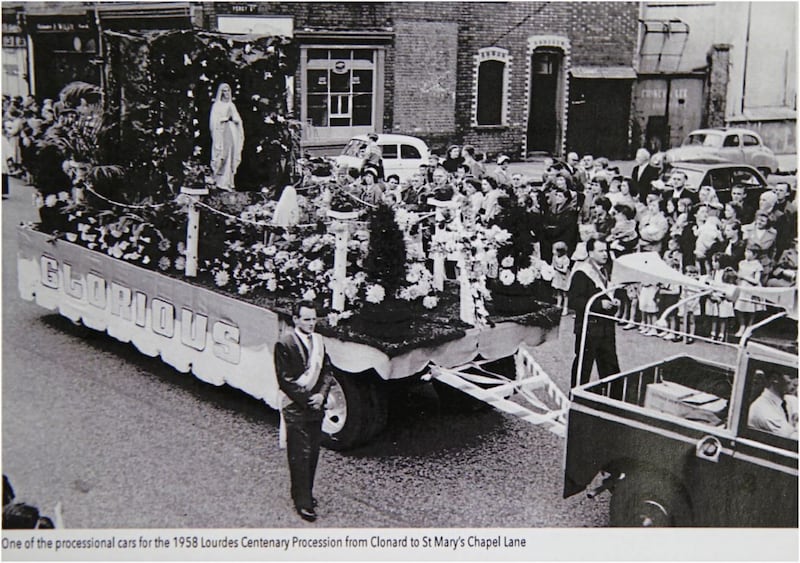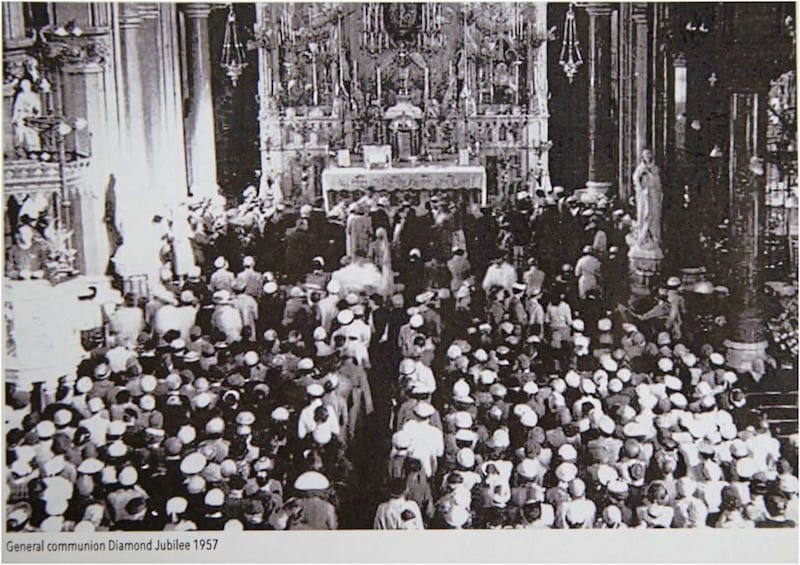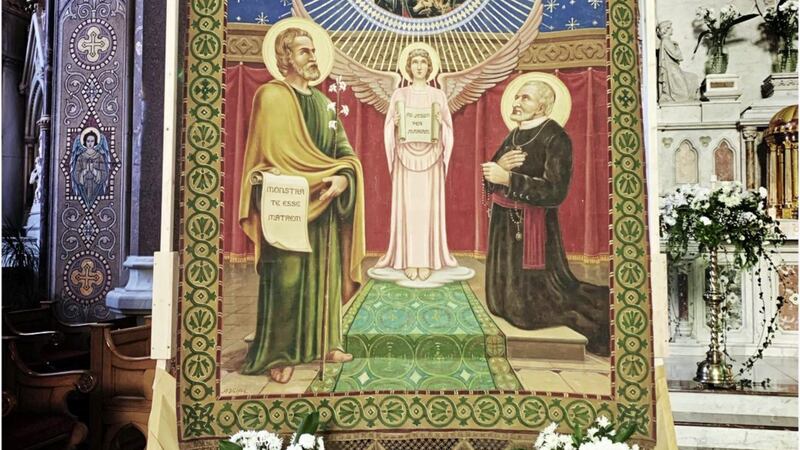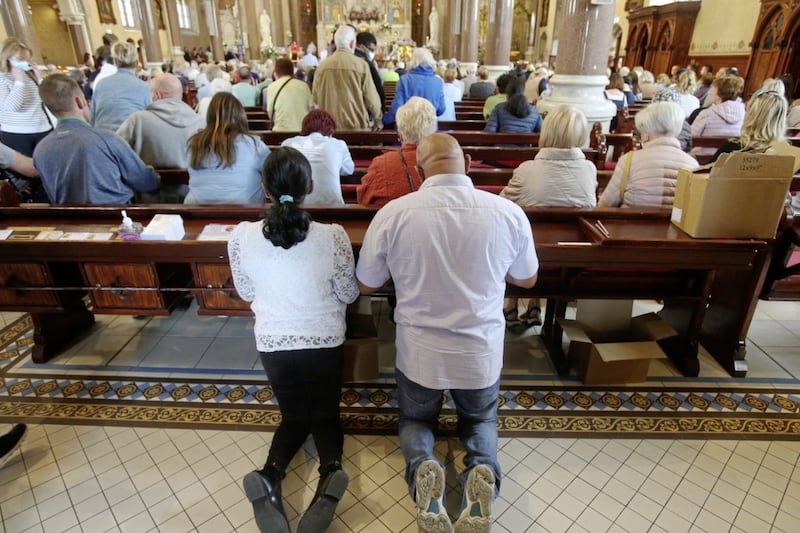AFTER a life of almost a century-and-a-quarter, a famed Belfast association for women will meet for the last time this Sunday.
The Confraternity of Our Lady of Perpetual Succour and St Alphonsus was formally established on July 14 1897 when Bishop Henry Henry of Down and Connor signed the formal document of affiliation.
The Redemptorists had taken up residence in Clonard House, the former villa of a mill-owner, the previous November.
By Easter, they had built a temporary chapel which was soon thronged by the people of the rapidly expanding west Belfast.
When he invited the Redemptorists to come to Belfast, Bishop Henry was particularly insistent that they should establish confraternities for men and women.
A confraternity of the Holy Family for men was established within a week of the women's.
Many of the first members of the confraternity were workers in the linen mills that had sprung up along Falls Road in the latter decades of the 19th century.
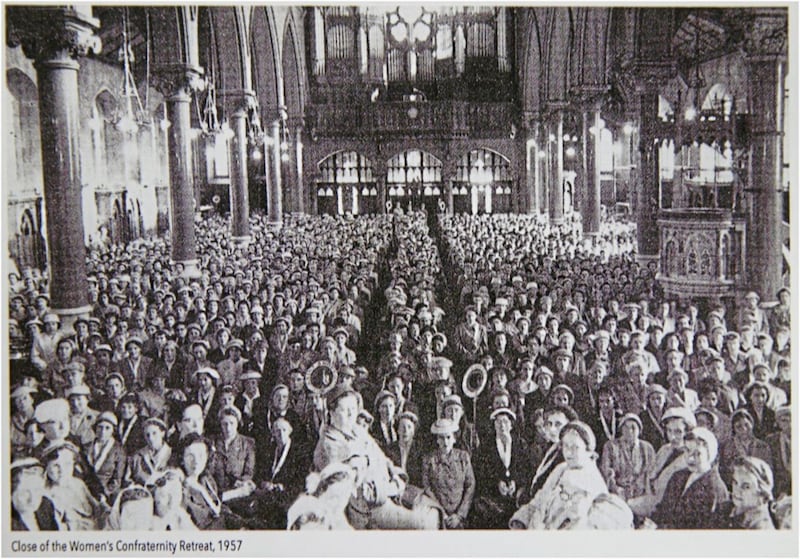
The mill women were particularly dedicated to Clonard. Their working day began at 6am and they stopped two hours later for breakfast.
Shortly after the Clonard Fathers began to celebrate a daily Mass at 8am, the mill women sent word to ask if the start could be delayed for five minutes to allow them to attend during their morning break.
The new Clonard Church was opened in 1911. The temporary chapel had been built for a congregation of 740 people, but often many as 1,400 squeezed into every last bit of space.
With a spacious new church, the confraternities grew as the population in the west of the city also expanded.
The period of the confraternity's greatest expansion was in the years between its golden and diamond jubilees in 1947 and 1957 respectively.
By then, it had grown to three divisions, each meeting on successive Sundays of the month.
With the congregations filling every available space in the new church, a second division was established in 1927.
A third, intended for younger women, was established in 1947. The women attended the 8am Mass in Clonard as their 'communion Mass'.
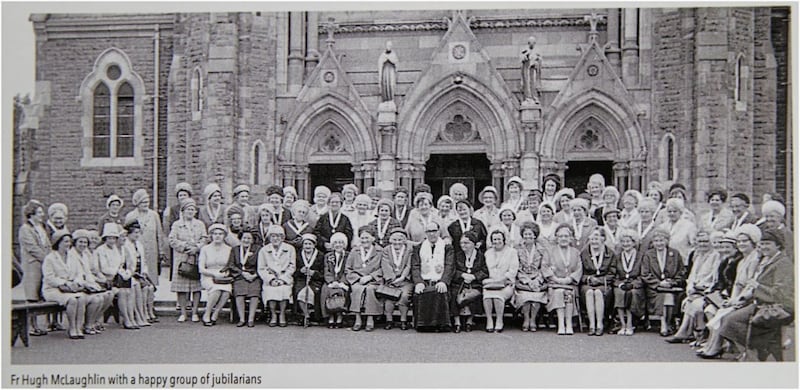
They returned to the church at 4pm for the confraternity devotions, consisting of the Rosary, a sermon by the director and the benediction.
The women of Clonard were conspicuous on a Sunday afternoon as they made their way to and from the confraternity meeting in their Sunday best, usually topped off with a hat in keeping with the church-going custom of the time.
Big occasions were celebrated with special events. In 'holy years', the members walked in procession to visit four designated churches in the Belfast area.
For the golden jubilee of the foundation of the two confraternities in 1947, the procession went to the field in front of Our Lady's Hospital in Beechmount.
There the benediction was given by Archbishop of Armagh John D'Alton. The procession returned to Clonard, where another benediction was celebrated in the monastery garden.
Clonard, like the rest of west Belfast, was plunged into 40 years of bombing, killing, hijacking and a constant military presence
The diamond jubilee of the confraternities was celebrated with two High Masses on successive Sundays, one for women and one for men, celebrated on an outdoor altar built by the men in the monastery garden.
The following year, in honour of the Lourdes centenary, two processions were held for the men and women, ending with benediction at the Lourdes Grotto at St Mary's in Chapel Lane.
A number of factors contributed to the decline of the Clonard confraternities.
In the first place, after the Second Vatican Council there was a notable decline in confraternities worldwide as the emphasis passed to active participation in the liturgy in the local language.
Second, was the reconstruction the Belfast urban landscape. The city had been expanding rapidly when the confraternities were founded.
The narrow streets of 'two-up, two-down' houses that had been built to accommodate the millworkers were seriously in need of replacement.
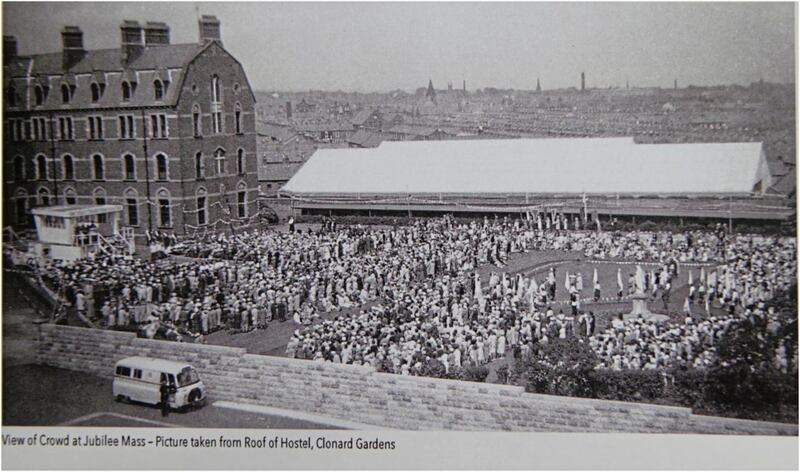
To allow the building of vast new housing schemes like Divis Flats, people were moved out to the suburbs.
Some continued to come to Clonard for the Novena and confraternity, but the times were changing.
Worse was to come with the civil unrest of the Troubles from 1969 onwards.
Clonard, like the rest of west Belfast, was plunged into 40 years of bombing, killing, hijacking and a constant military presence.
Members who had remained faithful to the confraternity were finding it difficult, and often impossible, to get to Clonard on 'their' Sunday because of 'trouble on the road,' with public transport regularly disrupted.
To their eternal credit, many women continued to make their way across town, sometimes wondering how they would manage to make it safely home but convinced that their loyalty to the confraternity would be repaid.
One woman who features in a commemorative brochure produced for the closing of the confraternity, remembers having to drive up the Crumlin Road as far as the mountain because of a march, and then down to Clonard by the West Circular Road; her back-seat passenger commented on what a lovely day out they were having, but that it was a pity they had not brought a picnic...
Despite the loyalty of its many ageing members, it was decided earlier this year to bring the Clonard Women's Confraternity to an honourable close.
A special Mass to mark the closure of the Clonard Women's Confraternity will be celebrated on Sunday November 24 at 3pm in Clonard Church. All members are invited, including those who have been unable, for whatever reason, to come to the confraternity for some time.
Dr Brendan McConvery CSsR is editor of Redemptorist Communications.
